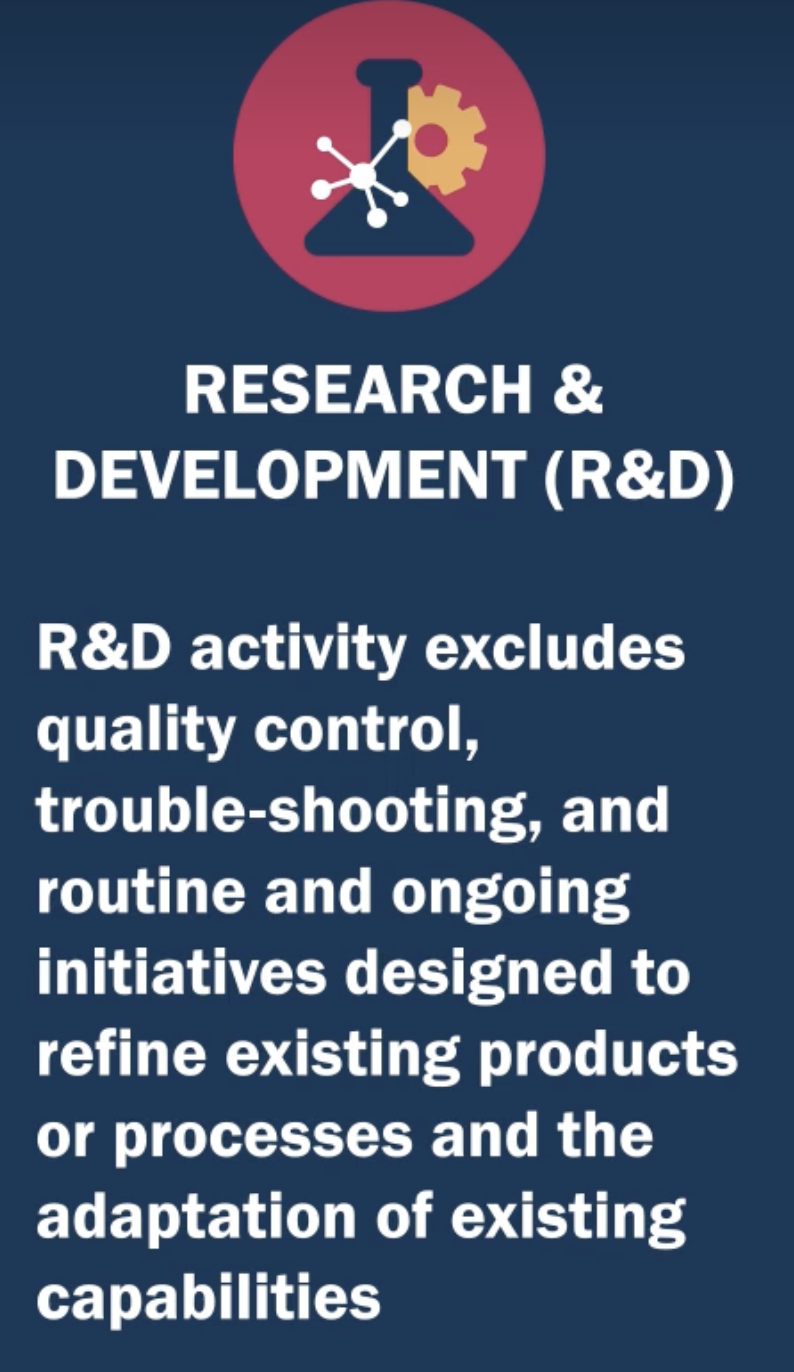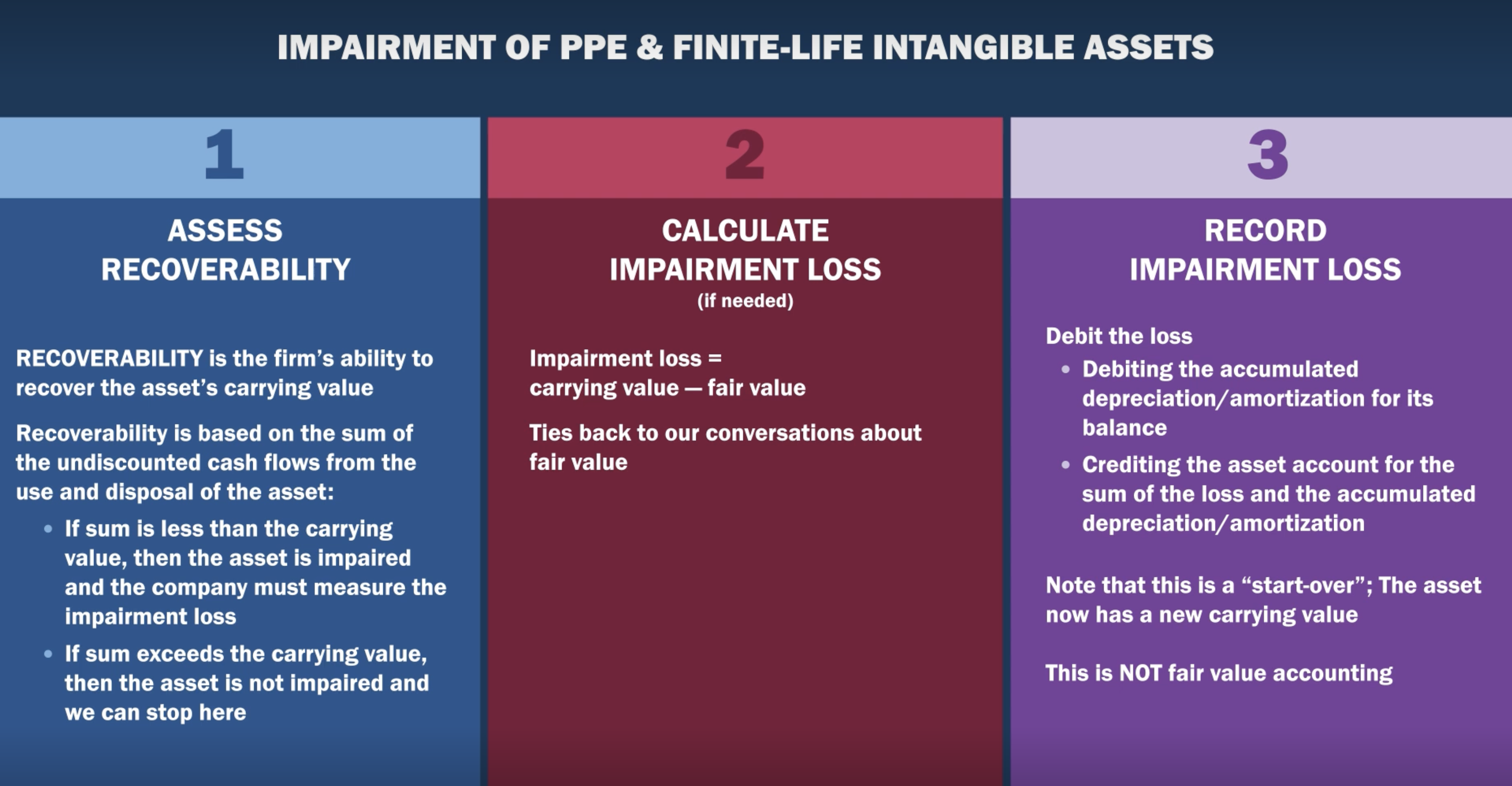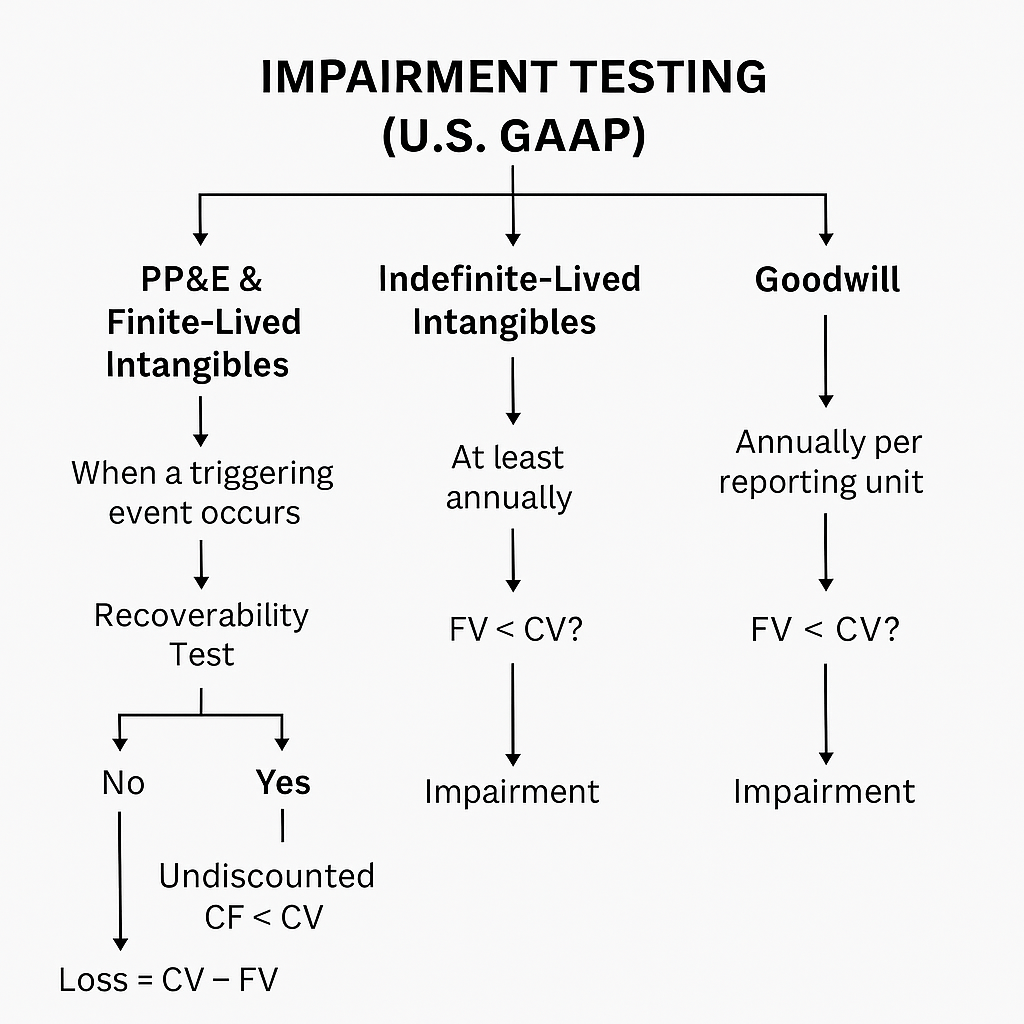FRB Week 2 (Intangible Assets)
1/44
There's no tags or description
Looks like no tags are added yet.
Name | Mastery | Learn | Test | Matching | Spaced |
|---|
No study sessions yet.
45 Terms
What are the 2 main types of intangible assets?
Finite Life (“Definite Life”)
Infinite Life (“Indefinite Life”)
Finite-Life Intangible Assets (def)
aka “Finite Life Intangible Assets”
intangible assets that:
individually identified
have limited useful lives
What are the 6 main types of Finite-Life Intangible Assets?
Patent
Copyright
Leasehold
Leasehold Improvement
Customer List
Franchise
Indefinite-Life Intangible Assets (def)
aka “Infinite Life Intangible Assets”
intangible assets w/ no identifiable legal, regulatory, contractual, or competitive factors that limit the asset’s revenue-generating term
Are indefinite-life intangible assets subject to amortization?
Nope
3 main categories of infinite-life intangible assets
(excluding goodwill of ind. life intangible assets)
Customer List
indefinite → if relationship is not expected to terminate
Renewable Intangible Assets
assets that are subject to renewal on a regular basis, and renewal is reasonably certain
Trademark or Trade Name
legal right to protect a design, a trade name, a logo, or a symbol from any unauthorized use by outside parties
Also includes Crypto Asset
Goodwill (definition)
an intangible asset whose value is created by factors that are typically difficult to identify and measure
considered as an indefinite-life intangible asset
it’s hard to identify and measure so we don’t record them BUT we are allowed to record it as an asset when we acquire another firm
Fair Value of Net Assets = Fair Value of Assets - Fair Value Liabilities
Goodwill is the amount we pay above the NFV!
Goodwill = Purchase Price - FV of Net Assets (goodwill if it’s positive, bargain purchase price if negative)
General Initial Measurement of:
Internally-Generated Assets
Purchased Assets
Assets Acquired in a Business Combination
Internally-Generated Assets
generally not recorded due to measurement issues
sometimes direct costs may be capitalized (e.g., legal fees for defending a copyright)
Purchased Assets
capitalized at cost
Assets Acquired in a Business Combination
capitalized at Fair Value (like all other assets and liabilities)
How is goodwill measured?
only measured if we acquired through M&A
measured as: the amount paid for the company - the fair value of the net assets, where:
Net assets = assets - liabilities
What if we purchase an asset for less than the fair value of the net asset?
this is a Bargain Purchase
The difference is recorded as a gain and is included in the income from continuing operations
Which F/S does goodwill go to?
B/S not I/S
How is goodwill recorded on the JE? How about bargain purchase?
Goodwill
has normal debit balance
Dr: Goodwill [$xxx]
Bargain Purchase
normal credit balance
JE: Cr: “Bargain Purchase gain” [$xxx]
Amortization (def)
systematic & rational allocation of the cost of FINITE-LIFE assets to expense over the:
expected useful life, -or-
legal life
(whichever is shorter)
Derecognition - when do firms remove intangible assets from their books? How do they remove the accounts from their books?
Firms remove upon disposal or when they expect no further economic benefits from the use (or disposal) of the asset
Gains/losses computed the same as PPE
Derecognition recorded the same as PPE
How are Crypto Assets measured?
Fair Value Accounting → Adjust asset such that its carrying value = its fair value
the difference = gain(loss)
!! Gains or losses are included in Net Income
If a crypto asset was bought for $40k on 1/1 and is worth $50k on 12/31 of the same year, how much should be reported for this crypto asset on the B/S at year end?
$50k since we report the fair value!
Research Phase Activities (def)
activities that include an original and planned investigation undertaken with the prospect of gaining new scientific or technical knowledge and understanding
Development Phase Expenditures (def)
expenditures that relate to the application of research findings or other knowledge to a plan or design for the production of new or substantially improved materials, devices, products, processes, systems, or services before the start of commercial production or use
Exclusions to R&D

Is R&D capitalized or expensed?
Under US GAAP, R&D is usually expensed
doesn’t matter if it’s development
Recording: Acquired In-Progress Research & Development
aka IPR&D
recorded as Fair Value
(FV at acquisition, not at cost or estimate of future spending)
recorded as an indefinite-life intangible asset until the project is completed:
If project successful → amortize asset
because it’s not longer indefinite
If unsuccessful → write off
What makes a project successful?
A project is considered successful (completed) when it
achieves technological feasibility and
is ready for its intended use or sale
How do you record a successful IPR&D?
Will amortize the asset for the (Fair Value less Any impairment)
How do you record an unsuccessful IPR&D?
We’ll have to write off the IPR&D
Debit IPR&D Write-off
(Last step, bc we calculate based off the accounts below)
This is = IPR&D total expense - Accumulated Amortization
Debit Accum. Amort.
Credit IPR&D for the total expense/cost
How does an impairment occur?
When an asset’s total future cash-generating ability falls below its carrying value
Reporting: Impairments
Report loss on Income Statement
Reduce Asset’s carrying value on the Balance Sheet
Can an asset’s value be increased again after a loss is recorded?
No (per US GAAP)
When to test for impairment
whenever “impairment indicators” indicate that an asset may be impaired
Recoverability
the firm’s ability to recover the asset’s carrying value
Steps for Impairment Testing (PP&E and Finite-Life Intangibles)
Assess Recoverability
Calculate Impairment Loss (If impaired)
Record Impairment Loss

How do we test for impairment? (PP&E and Finite-Life Intangibles)
add up the undiscounted cash flows from the use and disposal of the asset:
if sum < carrying value → asset is impaired
company must measure the impairment loss
if sum > carrying value → asset is not impaired
STOP HERE
Calculating: Impairment Loss
Impairment loss = Carrying value - Fair Value
Recording: Impairment Loss (PP&E and Finite-Life Intangibles)
Debit Loss on Impairment
Debit accumulated depreciation/amortization for its entire balance
Credit [asset account] for sum of loss and accumulated depreciation/amortization
Note:
this is a “start over” → the asset now has a new carrying value
this is NOT fair value accounting
Impairment of Infinite-Life Intangibles
One step impairment test
Determine if carrying value > fair value
no need for undiscounted cash flow bc it’s indefinite (cash flow extends far into future)
Impairment = carrying value - fair value
Record Impairment Loss
Debit Loss
no accumulated amort bc it’s infinite
Credit [asset account]
What is the carrying value for an infinite-life intangible?
Since it’s infinite life, the carrying value == original cost (it does not get amortized)
Operating Segment
Public entity with characteristics:

For goodwill, how often do they need to be evaluated for impairment?
It is required every year.
But it does not have to be year end, but the entity must disclose when they evaluated their goodwill.
Impairment of Goodwill
Impairment Test
Compare fair value of reporting unite (including goodwill) to carrying value of reporting unit (including goodwill)
FV < CV → impairment
Impairment loss = CV of RU (incl. GW) - FV of RU (including GW)
!Loss cannot exceed the balance of goodwill
Record Impairment Loss
Dr Loss
Cr goodwill
Disclosures of Intangible Assets
US GAAP required disclosures:
the asset/asset group that was impaired
events and circumstances that led to the recognition of the impairment (based on the impairment indicators)
amount of impairment loss in the notes to the F/S (if the firm does not separately disclose this amount on the income statement)
the method(s) used to estimate the fair value of the asset
Impairment Flow Chart
